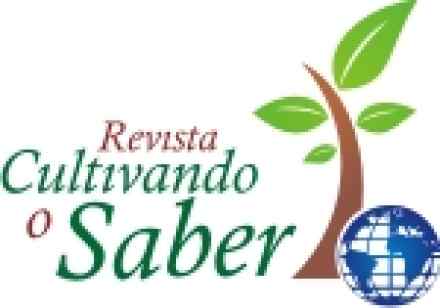Efeito da aplicação de fertilizante mineral cálcio e boro via foliar na cultura da soja (Glycine Max)
Revista Cultivando o Saber
Efeito da aplicação de fertilizante mineral cálcio e boro via foliar na cultura da soja (Glycine Max)
Autor Correspondente: C. Musskopf | [email protected]
Palavras-chave: Fertilidade, nutrição, vagens
Resumos Cadastrados
Resumo Português:
A cultura da soja (glycine Max), teve sua origem na China no século XI a.C, mas só
chegou ao Brasil em 1882. Em 1970 se tornou a principal cultura do agronegócio brasileiro e
deste perÃodo em diante aumento consideravelmente sua produtividade, graças a
investimentos tecnológicos. Sendo um desses investimentos ligados a área de fertilidade de
solo, tendo como objetivo estudar os solos brasileiros e corrigi-los para assim obter-se uma
maior produtividade. Com o avanço dessa tecnologia pode-se desenvolver novos métodos de
adubação, como por exemplo a adubação foliar, quem tem por objetivo complementar a
adubação via solo. Sendo assim esse trabalho tem por objetivo avaliar o numero de vagens e
grãos por vagem de plantas de soja tratadas com cálcio e boro. O experimento foi realizado
em casa de vegetação, sendo o plantio realizado em vasos, cujo delineamento foi o de blocos
ao acaso, o sorteio dos vasos foi feito através de números randômicos, com 4 tratamentos e 5
repetições. Os nutrientes cálcio e boro foram aplicados utilizando um pulverizador manual
com capacidade para 500 ml sobre a cultivar de soja (glycine Max) Nidera 4990, nos estádios
fenológicos R1 e R3. A colheita foi no estádio fenológico R6 quando a planta apresentou
plena formação das vagens e grãos. Os resultados obtidos foram submetidos ao teste de
Tukey com nÃvel de significância de 5%, apresentando diferença significativa quanto a
numero de vagens por planta e nenhuma diferença significativo quanto a numero de grãos por
vagem em relação à testemunha.
Resumo Inglês:
Soybean (Glycine Max), originated in China in the eleventh century BC, but only
arrived in Brazil in 1882. In 1970 it became the main crop of Brazilian agribusiness and this
period on substantially increase their productivity, thanks to technology investments.Being
one of those investments linked to the area of soil fertility, in order to study the Brazilian
soils and thus to correct them to obtain greater productivity. With the advancement of this
technology can develop new methods of fertilization, such as foliar, who aims to complement
the soil fertilization. Therefore this study aims to assess the number of pods and seeds per
pod of soybean plants treated with calcium and boron. The experiment was conducted in a
greenhouse, planting being carried out in pots, whose design was randomized blocks, the
draw of the vessels was made by random numbers, with four treatments and five
replications. The nutrients calcium and boron were applied using a sprayer with a capacity of
500 ml on the soybean (Glycine max) Nidera 4990, at growth stages R1 and R3. The harvest
was in the R6 growth stage when the plant showed full pod formation and grain. The results
were submitted to the Tukey test with significance level of 5%, showing significant
difference in the number of pods per plant and no significant difference regarding the number
of grains per pod than the control.

